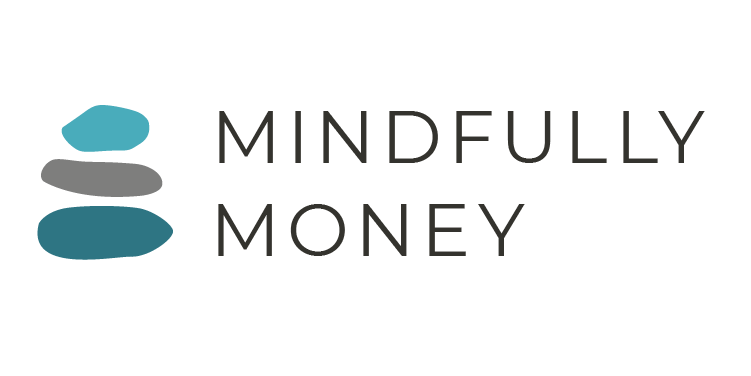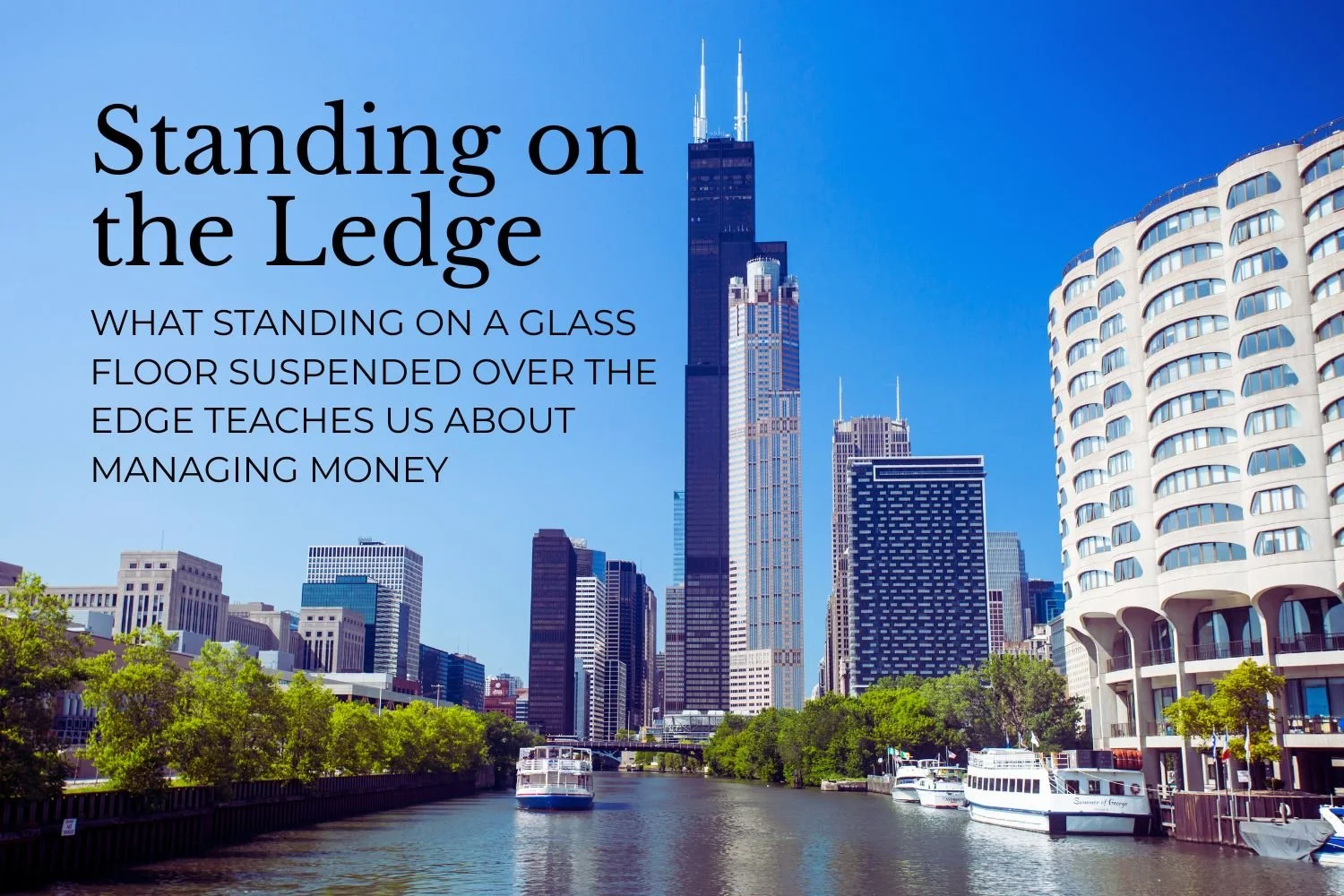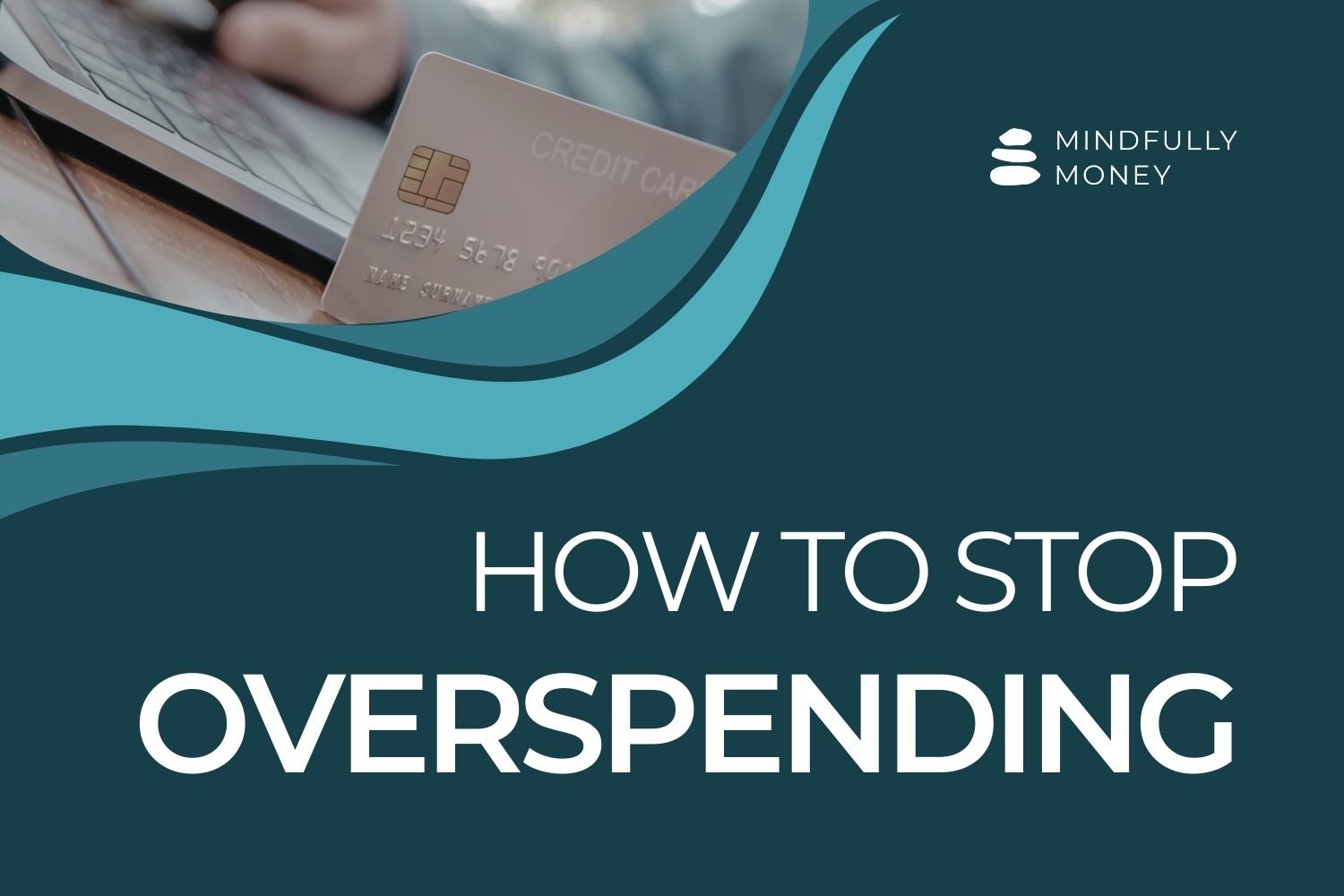Standing on the Ledge: What Fear Teaches Us About Money and Ourselves
Last week, my family and I stood 1,353 feet above Chicago on a mere 1.5 inch thick pane of glass extending 4.5 feet past the edge of the Sears (Willis) Tower walls. Some of us (my youngest child and my mother-in-law) stepped out on The Ledge, as it is known) as though it was no big deal. Me? I hovered at the edge with my heart pounding looking down at the street from 103 stories high and debating whether I would actually step out or retreat to safety.
Logically, I knew the Ledge was safe. I’d read that it could support up to 10,000 pounds (don’t bring your pet adult male African elephant) and is visited by over a million people each year. It’s designed to be safe. But that’s not what my body was telling me. I inched forward, closing my eyes and facing upward while whispering to myself “it’s safe, it’s safe” as I stepped onto the glass.
And I made it. I even managed to smile for a picture before I accidentally looked down and shot out of there like a cannon.
See? I made it! (Even if I am holding on for dear life.)
Maybe you’ve felt that split—between what you know and what you feel. Not everyone is afraid of heights, but chances are that at some point you’ve experienced your feelings telling you one thing and the logical part of you is telling you something else.
We all have our own “ledge” moments. For some, it’s walking into a room full of strangers. For others, it’s speaking up in a meeting, going for a job interview, or scheduling that long-overdue doctor’s appointment.
Sometimes, just trying something new or facing a big unknown can make your palms sweat and your breath turn shallow. Even when you know, deep down, that you’re probably safe, your body and mind might not get the memo.
What’s going on here? Why do we freeze, panic, or want to run away—even when we know there’s no real danger?
It all comes down to how our brains are wired. You’ve probably heard of the fight-or-flight (or freeze) response. That’s your amygdala—the ancient, instinctive part of your brain—doing its job to keep you safe. It doesn’t stop to analyze; it just reacts. Your heart races, your breathing quickens, and your body prepares to protect you.
This is great when you’re actually in danger (like, say, facing down an angry pit bull or almost stepping in front of a moving car). But it’s less helpful when you’re simply standing on a reinforced glass ledge or considering whether to speak up in a meeting. Our brains sometimes can’t tell the difference between real threats and uncomfortable situations.
The rational part of our brain—the cerebral cortex—helps us plan, analyze, and see the big picture. But it’s slower to respond. Sometimes, it doesn’t kick in at all, especially when our emotions are running the show.
Back on The Ledge, I had to fight to engage my rational brain, to remind myself I was safe. It wasn’t easy. I could have just as easily stayed inside, watching from the comfort of solid ground.
And honestly? We all do this with money, too.
Think about the last time you saw a “limited time offer” or a “one-day-only sale.” Maybe you felt a little jolt of panic—if you don’t buy it now, you’ll miss out! I’ve definitely made more than one impulse purchase thanks to that feeling. My heart rate goes up, my breathing gets shallow, and suddenly it feels like I have to buy that thing right now, or else.
It’s the same brain process as standing on The Ledge. No, there’s no real danger, but my body senses a threat—missing out, being left behind, not having enough. And just like The Ledge, if I give myself a moment to think, I usually realize I’m okay. I don’t actually need another orchid (my track record with plants is… not great), and my closet is already overflowing with shoes.
If you struggle with impulse buys or feel out of control with your spending, you’re not alone. Your brain is doing exactly what it was designed to do—protect you, keep you safe, help you avoid discomfort. We can’t analyze every single purchase; sometimes, we need our instincts to get through the day. But if we never pause to engage our rational brain, we can end up feeling overwhelmed, anxious, or regretful about our money choices.
So what can you do the next time you find yourself on your own “ledge”—whether it’s with money, a tough conversation, or something new and scary?
1. Pause and Notice
Before you act, take a breath. Notice what’s happening in your body—tight chest, racing heart, urge to click “buy now.” Name the feeling: “I’m anxious,” “I’m excited,” or “I’m afraid of missing out.” This simple pause gives your rational brain a chance to catch up.
2. Question the Urgency
Ask yourself:
Is this really urgent, or does it just feel that way?
What’s the worst that happens if I wait?
Am I making this choice from fear or intention?
3. Check the Story
What is your brain telling you? Is it true? Is it kind? Is it helpful? Challenge those automatic thoughts with curiosity, not criticism. For example: “Is it really true that I’ll never get another chance at a sale?” or “Does buying this actually solve the feeling I’m having right now?”
4. Give Yourself Permission
It’s okay to feel nervous, excited, or even a little impulsive. You’re human! Self-compassion is key—be gentle with yourself if you slip up or make a decision you later question. Every experience is a chance to learn about your patterns and what you need.
5. Choose Your Next Step
After pausing, questioning, and checking in, decide what feels right for you. Maybe you walk away from the purchase. Maybe you buy it, but with awareness. Maybe you reach out for support or just give yourself a moment to breathe.
Stepping onto the ledge—literal or metaphorical—will always feel a little scary. But every time you pause, notice, and choose with intention, you’re strengthening that rational, compassionate part of your brain. You’re proving to yourself that you can handle discomfort, uncertainty, and even the occasional misstep.
Next time you feel the rush of urgency or anxiety—whether you’re shopping, making a decision, or just navigating life—remember: you can pause. You can question. You can choose. And you can always step back to solid ground, knowing you’re learning and growing with every experience.







